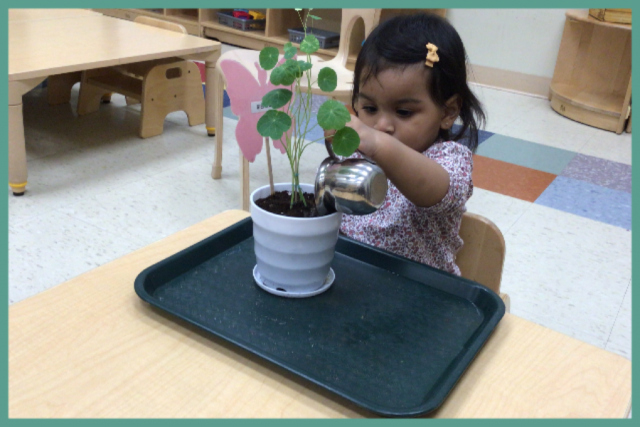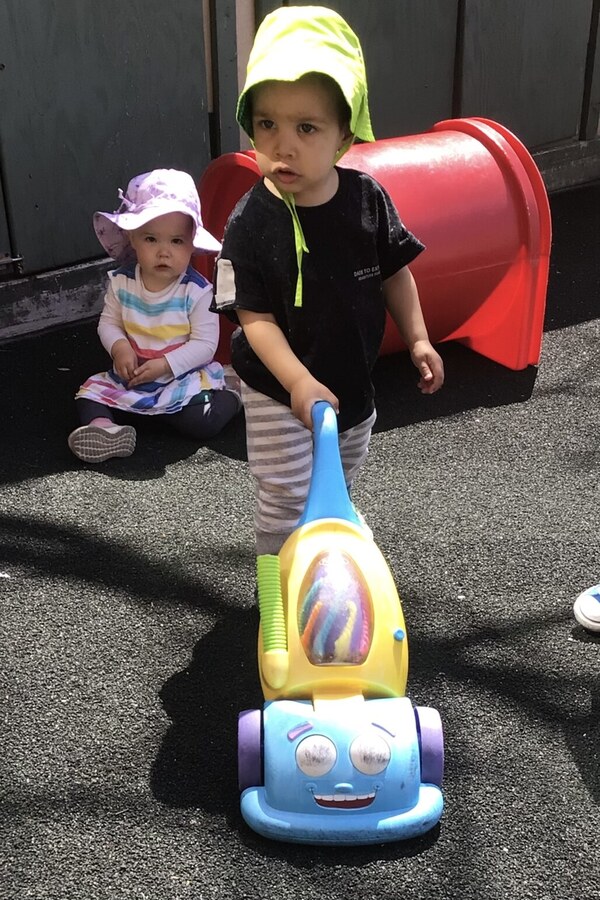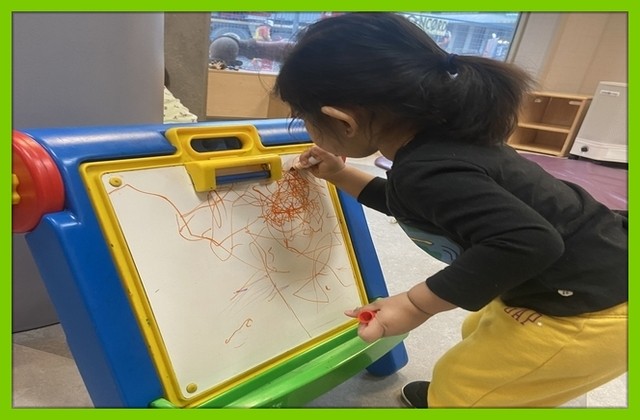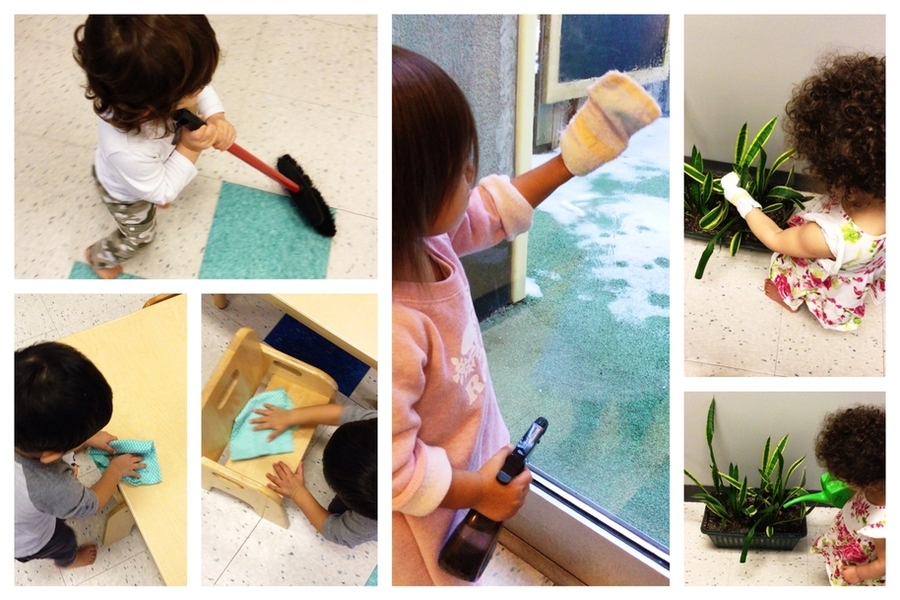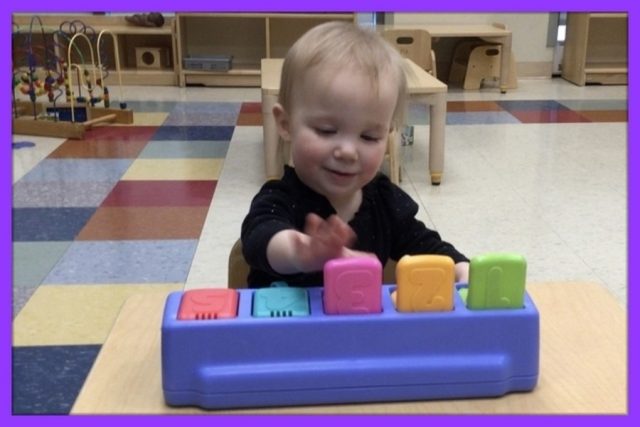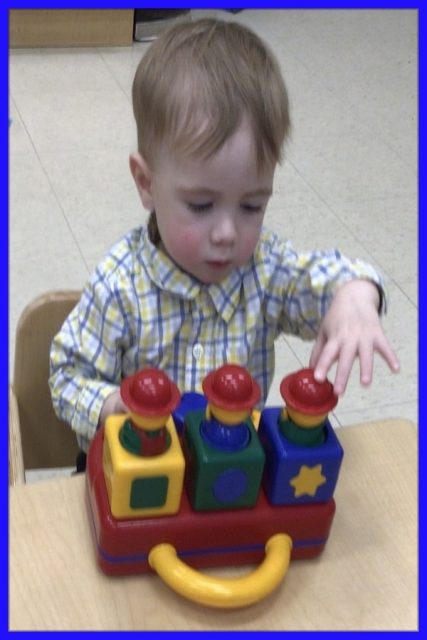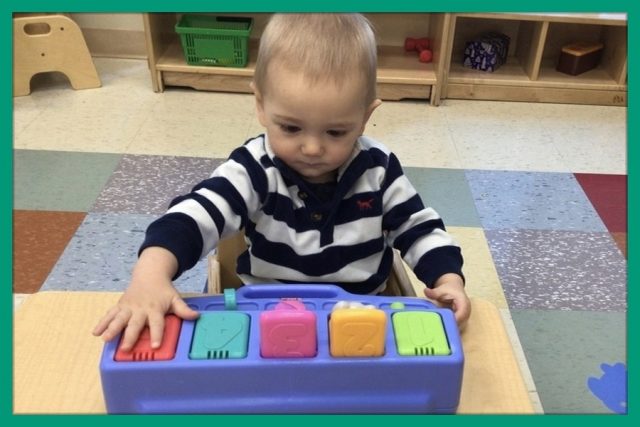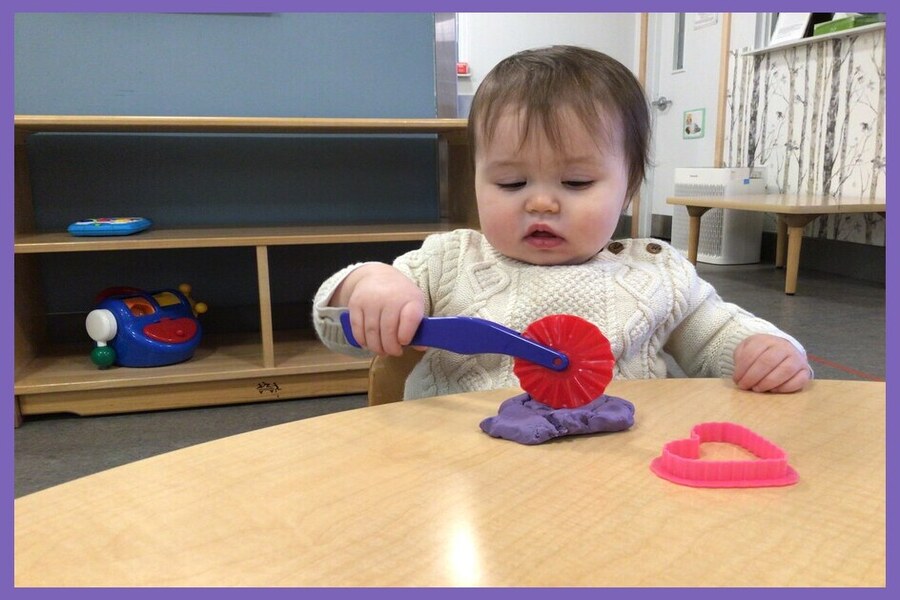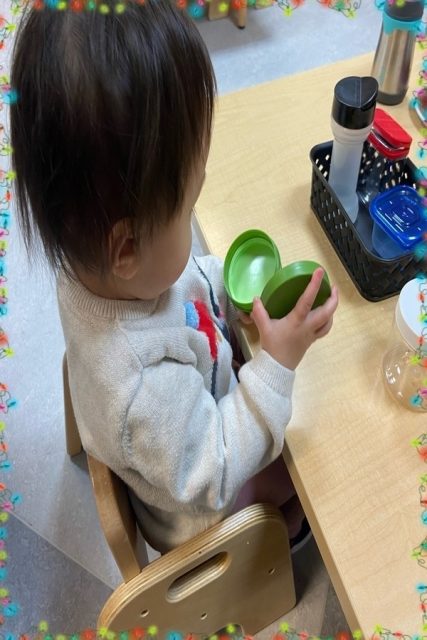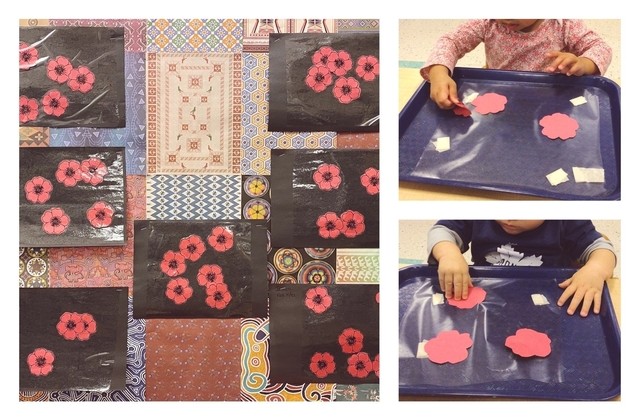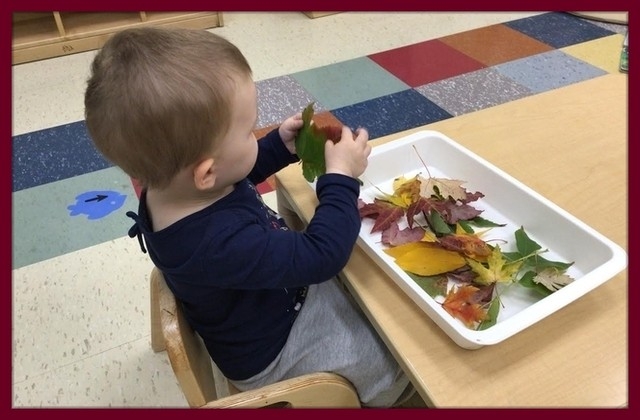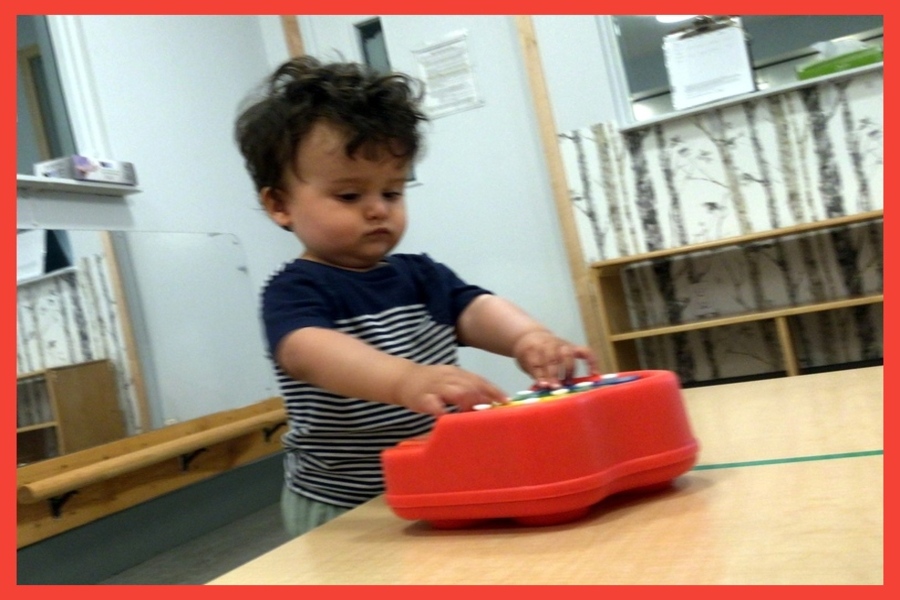Description and Learning Objectives
Watching plants grow is a fun and educational experience for children. Their curiosity and excitement over anything new makes them a natural for gardening. Growing plant seeds with children teaches them how nature works, responsibility in caring for living things, interest in environment sustainability, and pride in themselves. The teachers chose seeds for them that are large enough to handle and that germinate readily.
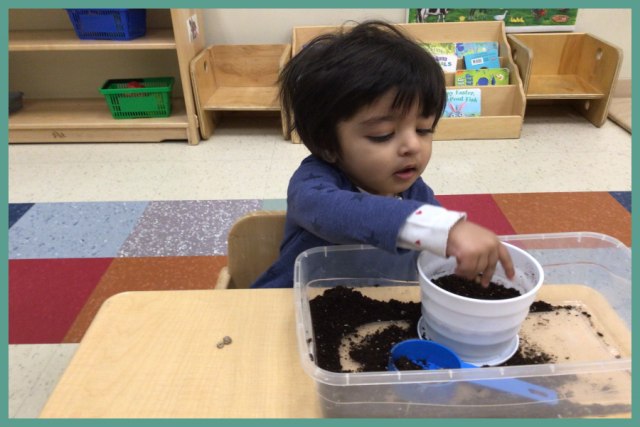
Materials
- plant seeds
- soil
- pots
- watering can or jug

Observations and Findings
Through planting, children are able to gain a sense of self. They start to see that they are capable of doing things independently and that they can produce things with their own hands. By taking the time to nurture and provide what the seed needs (like water and sunshine), the children are able to see it bloom and develop into something new. As they build confidence in themselves and their abilities, they are able to create a foundation that help support the relationships they make with other people and their own environment as they grow older. The children are introduced to the idea that if they put time and effort into the things they do and the interactions they make, it can blossom into something more.
Planting also provides children with an opportunity to better understand the concept of cause and effect. Planting shows them how a seed will sprout and grow over time by watering. The children build a better connection with how the world works and how they can influence the things around them. Through planting, the children’s interest in nature also grows. They begin to recognize that they have a responsibility to their physical environment, especially its sustenance and maintenance. With this activity, their bond with nature becomes more than just something that just simply exists in their world. It is not something that has a beginning and an end. Planting a seed and nurturing it until it grows into a flower, and then picking the flower and placing it into a vase allows children to see that there is a progression to the things they do.
It is an exciting way to provide more hands on experience to their children in observing how nature works!
